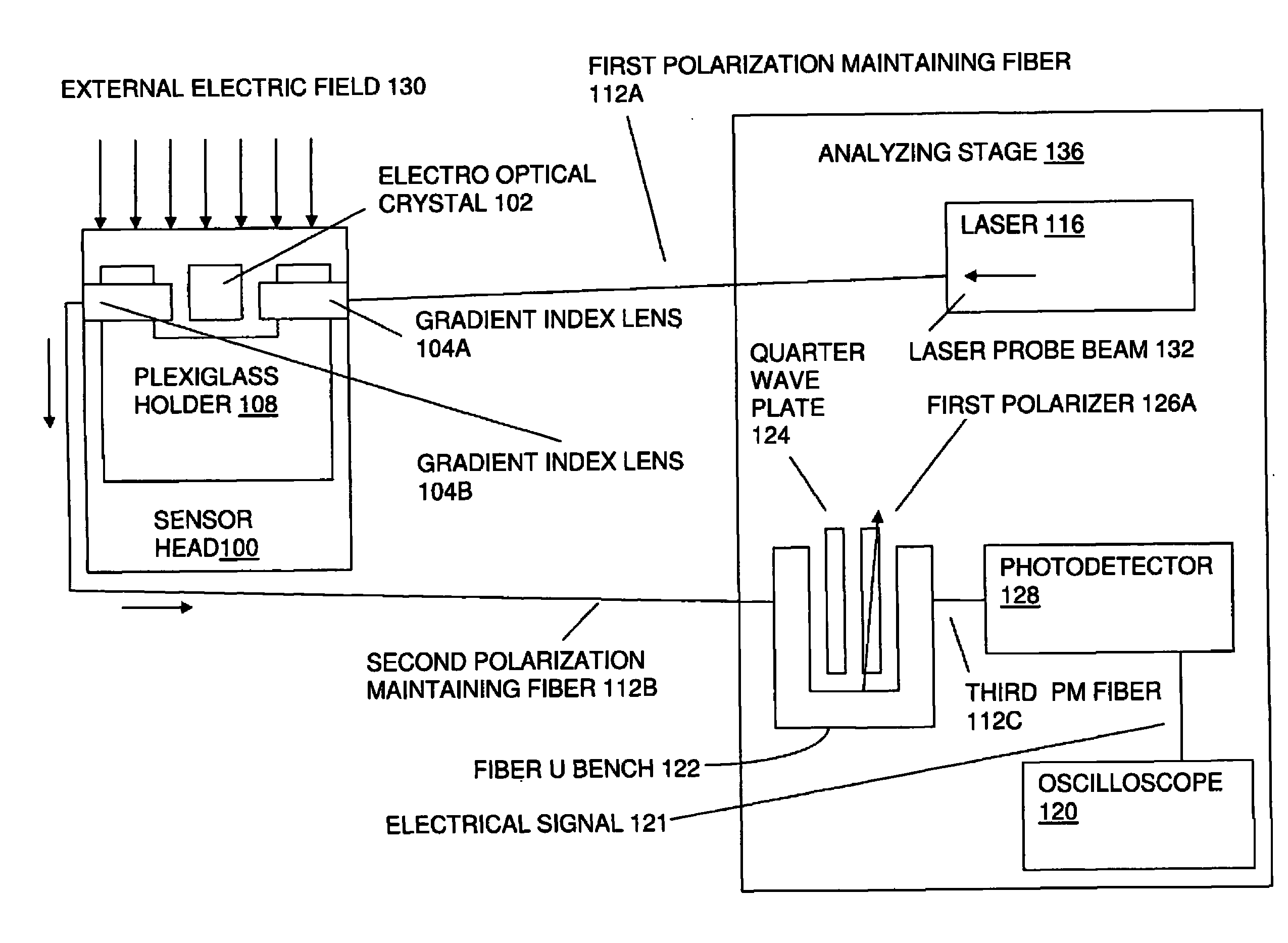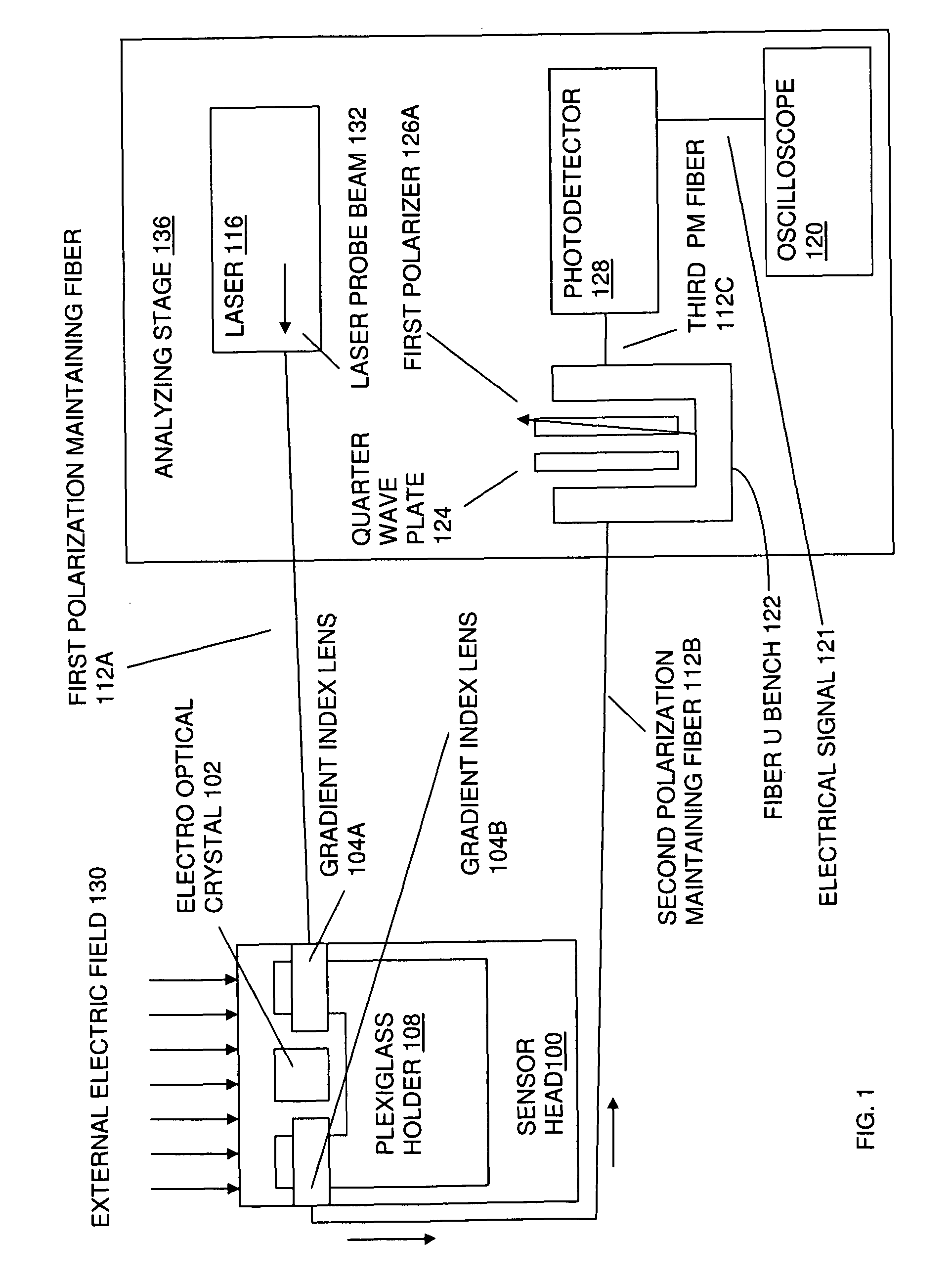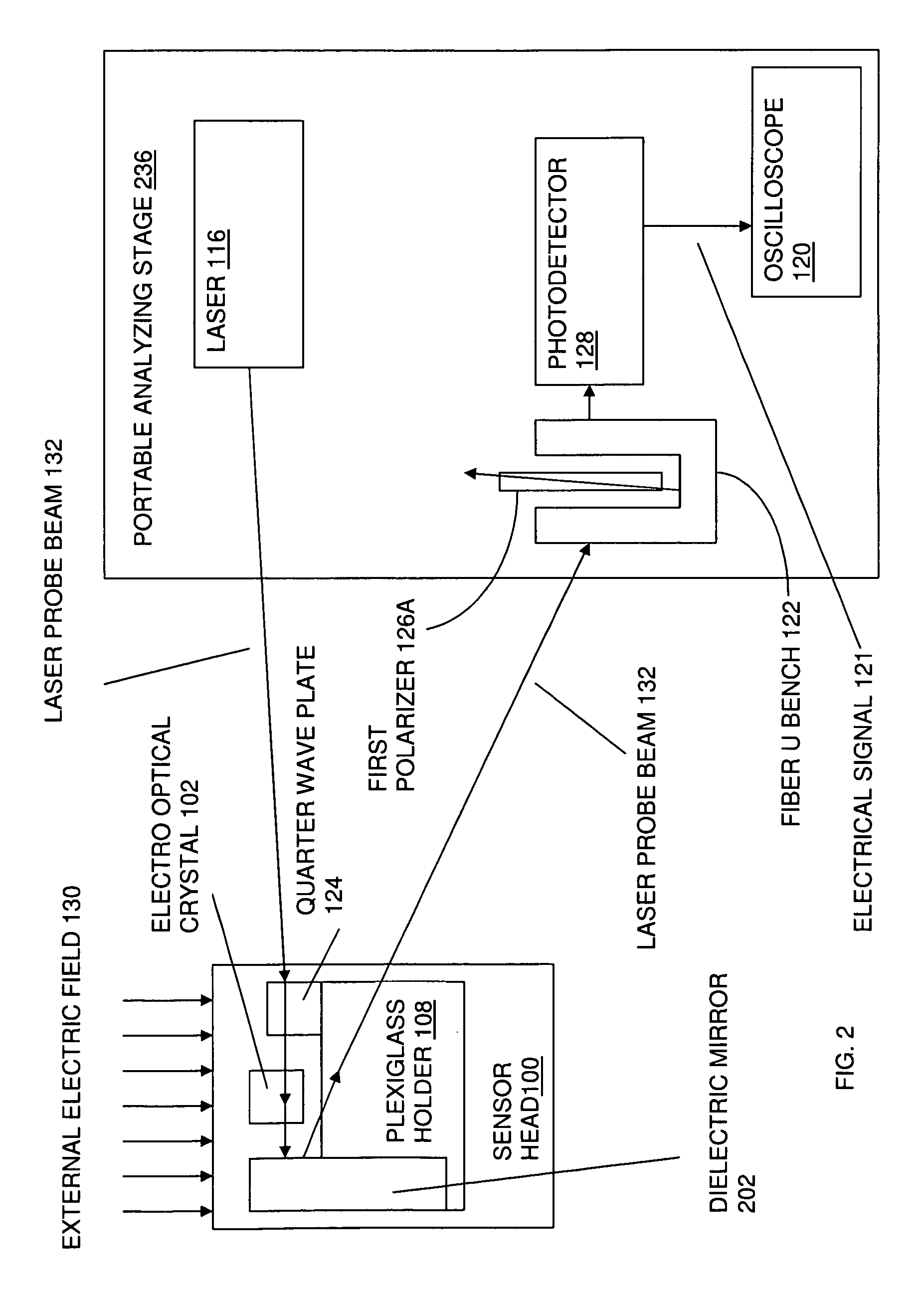Apparatus and system for electro magnetic field measurements and automatic analyses of phase modulated optical signals from electrooptic devices
an electrooptic device and automatic analysis technology, applied in the field of electromagnetical field sensors and automatic analysis devices, can solve the problems of inability to accurately detect the phase modulation of the optical signal, etc., to achieve the maximum responsivity of the sensor, stabilize the temperature and photo-induced signal fluctuations, and maximize the effect of sensor responsivity
- Summary
- Abstract
- Description
- Claims
- Application Information
AI Technical Summary
Benefits of technology
Problems solved by technology
Method used
Image
Examples
example 1
[0066]FIG. 6 and FIG. 7 illustrate the stability and maximization of modulation amplitude (V) of intensity modulated light signals, such as intensity modulated optical output 410 (see FIG. 4 and FIG. 5), from EO modulating devices. FIG. 6 and FIG. 7 compare the modulation pulse height from an EO field sensor plotted as a function of time. In FIG. 6, a traditional polarizer, such as the first polarizer 126A, (set at a fixed angle which optimized responsivity) was used in the analyzing stage, such as the analyzing stage 136. In FIG. 7, an auto analyzer, i.e., the first polarizer 126A automated in auto analyzing stage 536 (see FIG. 5) was used to analyze the laser probe beam 132. The deviations shown in FIG. 6 represent the deviations in the value of the phase factor sin φ0, as previously discussed. As demonstrated by a comparison of FIG. 6 and FIG. 7, the auto analyzer can overcome these deviations and keep the EO sensor stable and operating at its peak responsivity.
PUM
 Login to View More
Login to View More Abstract
Description
Claims
Application Information
 Login to View More
Login to View More - R&D
- Intellectual Property
- Life Sciences
- Materials
- Tech Scout
- Unparalleled Data Quality
- Higher Quality Content
- 60% Fewer Hallucinations
Browse by: Latest US Patents, China's latest patents, Technical Efficacy Thesaurus, Application Domain, Technology Topic, Popular Technical Reports.
© 2025 PatSnap. All rights reserved.Legal|Privacy policy|Modern Slavery Act Transparency Statement|Sitemap|About US| Contact US: help@patsnap.com



